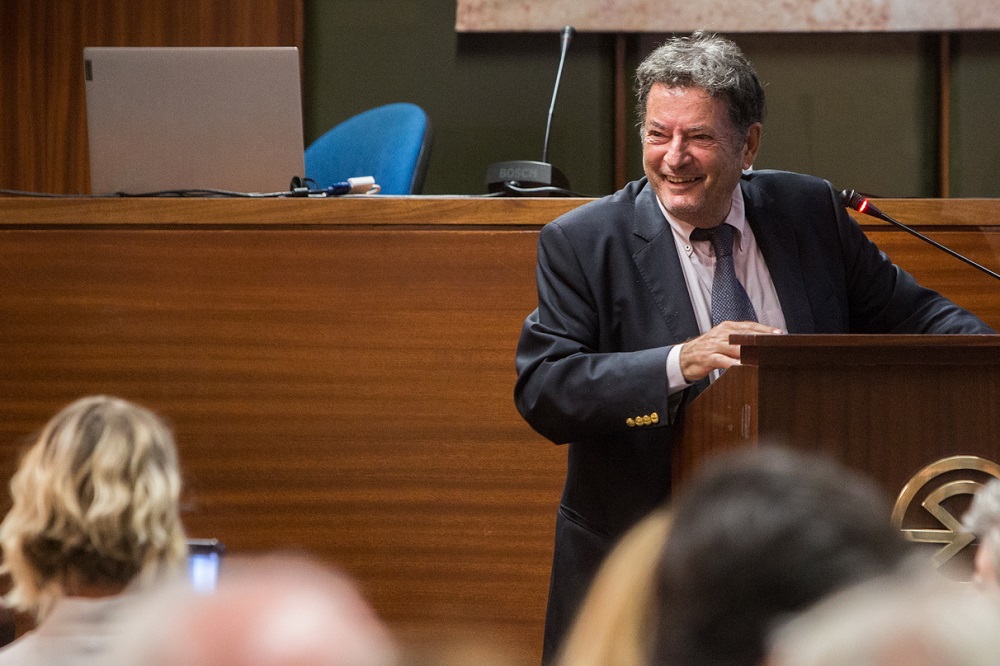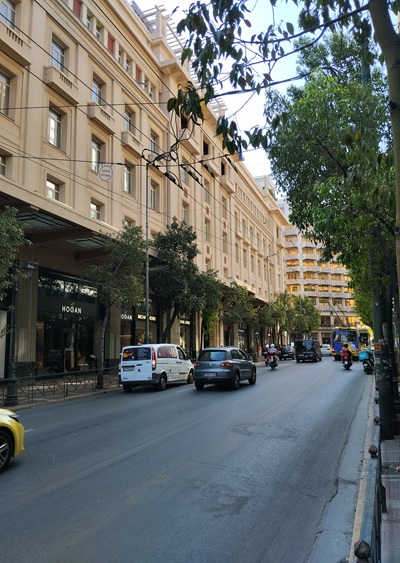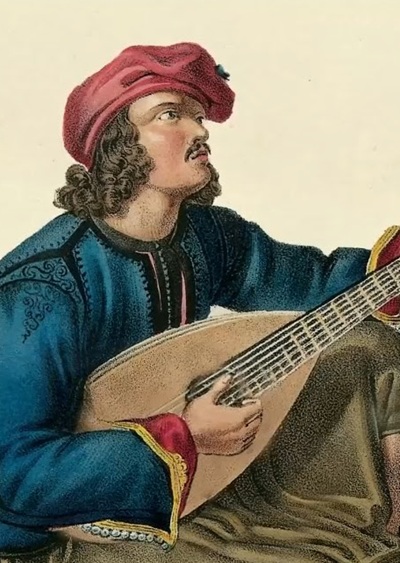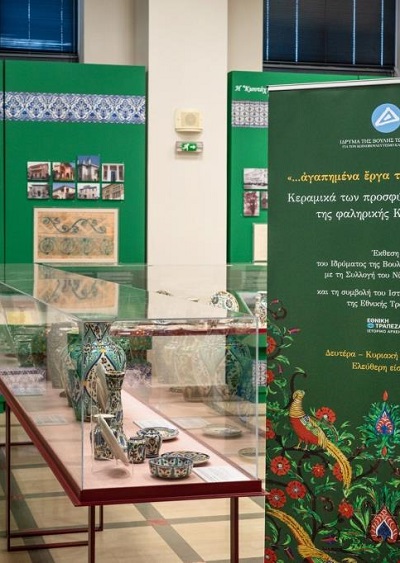
On April 3, Constantine Sp. Staikos, the book’s architect and historian, died.
Biography of Constantinos Staikos
First Period (1943–1971)
Constantine SP. Staikos was born in Athens in March 1943, and his first school was “Elikon”, in Patission Street. He continued with elementary at the I school. M. Panagiotopoulos, the so-called “Makri”, in Vasilissis Sofias Street In the first year of high school, he was a student at the 1st Boys ‘ High School in Plaka, from where he was admitted internally to the School of Anavryta, while in the last two years, he studied at the Experimental School of Athens (Skoufa Street).
He studied for two years at the School of Fine Arts of the Technical University of Athens, with B. Vassiliadis, in the Department of Applied Arts, specializing in scenography. With the material he collected, he was admitted to the Higher National School of Decorative Arts (École Nationale Supérieure des Arts Décoratifs) in Paris.
However, his career in the field of art was marked by Giannis Tsarouchis, as he followed his instructions and recorded elements that characterize the interior decorative motifs (furniture rhythms and wall coverings), architectural members (doors, windows), and other various French architectural and decorative elements, mainly in the middle of the 19th century. Thus, he made an exhaustive record in the archival collections of museums and libraries, which revealed to him the extent to which the fine arts were intertwined with the spirit of the time and politics, ultimately influencing social norms as well. From 1968 on, he worked in Paris in various architectural-decorative offices, that were responsible for the restoration and redevelopment of historic and monumental buildings, such as the Château de Ferrières. He also worked for a time at the Knoll modern furniture house, which manufactured furniture according to new trends, using materials such as aluminum or steel.
Second Period (1972–1989)
In 1972, he returned to Athens and started working in the architectural office of his father, Spyros Staikos, where he learned in practice the secrets of building. At the same time, he worked for two years in the furniture factory of Saridis, where, as a simple craftsman, he worked with wood—as – carver, a polisher, and a second carpenter. Thus, he gained knowledge on every aspect of interior decoration and furnishing. Then, in 1974, he opened his own office at 10 Panos Aravantinou Street. There he also organized a special space, where he exhibited his own designs of furniture, textiles, and other decorative elements. His intention was to show the Greek public that the domestic artistic tradition we have is more than adequate and fits perfectly with contemporary art trends for interior design.
He designed geometric patterns, which he printed on cotton fabrics in many color combinations, inspired by old embroidery and Greek costumes. This venture had a great impact and success, since, within a decade, forty stores all over Greece operated exclusively with its own decorative products. The end of this story came along with the liberalization of tariffs on imports from European countries under the EEC, so the bourgeois and bourgeois classes preferred to be surrounded by decorative materials demonstrating foreign origin and aesthetics consistent with modern fashion trends.
Along with his professional activity, he began to form the core of the library, which included publications related to the history of Greek printing, from the 15th century on. This collector’s interest in the book quickly developed into a passion for exploring the publishing activity of Genos, from the Renaissance to the first post-revolutionary years. His intellectual interests regarding the pioneers for the dissemination of Greek thought through books printed in the West and East intensified since he was commissioned to study the reconstruction of the Historical Library of the Monastery of St. John the theologian in Patmos. This work lasted ten years, and the library as well as the museum were inaugurated by the Ecumenical Patriarch Dimitrios, during the solemn celebration of the 900 years (1088–1988) since the foundation of the monastery.
In 1986, in collaboration with the academic and professor Manoussos Manousakas, they organized in Florence an exhibition of the first Greek editions and Latin translations of Greek texts, on the occasion of the city’s promotion as European capital of culture. The title of the catalogue that accompanied the publication was: L’attività Greca durante il Rinascimento Italiano (1469-1523). This is a bilingual catalog, with Greek and Italian text, biographical and three-geographic commentaries on Greek scholars, as well as notes for each edition accompanied by bibliographic references.
This exhibition, always accompanied by bilingual catalogs, was presented at the Benaki Museum in Athens (1987), Geneva (1988), Strasbourg, Leiden, Netherlands, The Book City Wolfenbuttel, Germany, with the printing of a catalog in Greece (1989), and Venice (1993).
Third period (1990-present)
During his ten-year involvement with the library and the Museum of the Monastery, he had the time to delve into the history of the institution of the library over time and in many cultures, so he also noticed the great gaps that exist regarding the different architectural approaches imposed by the mutation of the form of the book and the various spiritual currents in each era. Thus, he began his research in order to compile a chronicle of the evolution of the library, both from a library and architectural point of view, starting from 4000 BC. The result is the five-volume history of the library in Western culture, published from 2000 to 2013, and published in Greek, English, and now additionally in Chinese.
The publicity generated by his work on Patmos opened new professional paths, related to the restoration or redevelopment of monumental sites of historical interest. This resulted in the redevelopment of the library of the Ecumenical Patriarchate in Phanar, the transformation of the building Kostis Palamas (work of Kleanthis) into an auditorium of the University of Athens, the transformation of the Rotunda, the Holy Church of St. Theodore of Theron on the Palatine Hill in Rome (5th century), from a Catholic to an Orthodox Church, the mansion of the municipality of Athens, etc.
All this time he continued to enrich his personal collection of books, either with original works on the publishing activity of the Greeks before the creation of an independent Greek state or with studies on the printing and production of the book in every European country, thus tracing the course followed by the printed book internationally.
The wealth gathered in archetypal and old publications, with rare or unique books, began to trouble him and mainly concern him with securing his future. He considers that the collection of books that reflects the spiritual history of the nation cannot be a personal matter, but the property of all Greeks. Given the nakedness of Greek libraries, she sought shelter for her future. Tyche Agathi, the Council of the Alexander S. S. Public Benefit Foundation, heeded his appeal, and at the foundation’s headquarters, Onassis granted special spaces, in which bookstores were developed for the entire collection. In fact, this library did not remain as it was, but continues to be enriched with books according to the original concept of its creation.
In addition, he considered that the vast amount of documented information and images he has collected could, after planned research and documentation, take the form of an encyclopedia, which could only be made accessible to the public electronically. Thus, he envisioned the creation of the “About Libraries website. In April 2020, he founded the non-profit organization “Garden of Philobibles” and, in cooperation with the National Documentation and Electronic Content Center, created the digital encyclopedia “On Libraries – www.aboutlibraries.gr” for the world of libraries, from antiquity to the present. The main objective is the organized recording and promotion of the history of libraries and their collections, in a friendly and direct way, as well as the creation of a hub for the collection of rich material, information, research, and the interconnection of library people in Greece and around the world.
Constantine Sp. Staikos is also the owner of the Aton publishing house, and his books are published in Greek, English, Italian, Dutch, French, Chinese, and Arabic. The main subject of the publications is the history of the book and libraries in western culture and book-related topics. Indicatively, some titles are: The spiritual course of the Gens (4 volumes, 2017–2022), the Ptolemaic Museum and Library in Alexandria (2020), Erasmus. An apostle of the Greek intelligentsia from the North (2020), Greek archetypes and Greek writings in heterolingual archetypes (2019), library architecture in Western culture. From the Minoan era to Michelangelo (2016), the history of the library in Western Civilization (5 volumes, 2002–2012), the library of Plato and the Academy (2012), the Aristotelous Library (2015), etc.
His first printed venture was the Charter of the Greek Printing Press: the publishing activity of the Greeks and their contribution to the spiritual renaissance of the West, with a preface by C. th. Dimara. This book focuses on the involvement of Greeks with publishing and printing art and traces the beginnings of Greek printing in the humanist movement of Italy, as the involvement with the publication of classical texts was not so much aimed at the intellectual cultivation of Hellenism as at supporting the Humanities in the academic circles of the West. Besides, the entire publishing program with works of the Greek secretariat is a continuation of the evolutionary history of the humanist current, while the texts that were published were the subject of study, teaching, and exhaustive interpretation long before the era of printing.







Leave A Comment